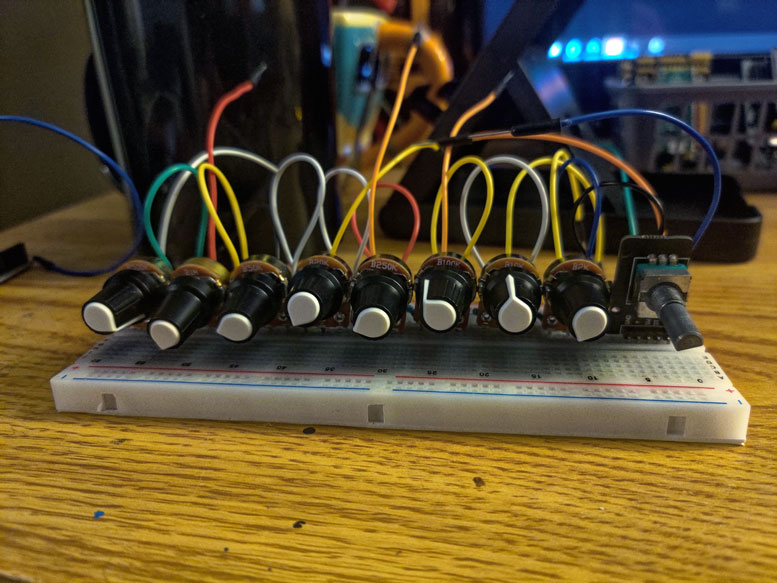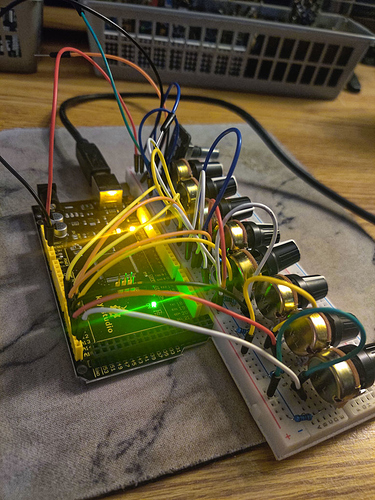*** Massive nerd shit ahead ***
This depends on the circuit after the resistor. Photoresistor is just a variable resistor that changes the magnitude of the incoming voltage and nothing else, just like a wiper pot. If it’s at half mast, you get half the total resistance (10k * 0.5 = 5k ohm). What that does to your signal depends on the rest of the circuit.
What’s your circuit topology? Are you using the photoresistor in a voltage divider? If not, you should try that as they tend to be easier to tune.
Assuming a voltage divider, it’s V.out = V.in * R2 / (R1+R2) - there are calculators for this online
Consider:
V.in = 5V, R1 = 100k, R2 = Photoresistor with a range of 1k to 10k
V.out_max = 5V * 10000 / (100000 +10000) = 0.45 V
V.out_min = 5V * 1000 / (100000 +1000) = 0.05 V
V.out_diff = 0.4 V
so in this case the static resistor completely dominates the equation and you get a voltage range of 0.4V. This is small enough that you’d likely to to amp it when it comes out of the divider.
Changing the R2 static resistor is going to have a big effect on how your photoresistor operates.
V.in = 5 V, R1 = 1k, R2 = Photoresistor with a range of 1k to 10k
V.out_max = 5V * 10000 / (1000 + 10000) = 4.55 V
V.out_min = 5V * 1000 / (1000 + 1000) = 2.5 V
V.out_diff = 2.05 V
Dropping down from 100k to 1k means a ~2V range, or a 5x increase in voltage change.
(note this is a novel case for voltage dividers, where R1 = R2, you get half voltage)
And here’s with what amount to a pull down resistor and the photoresistor dominating:
V.in = 5 V, R1 = 100 ohm, R2 = Photoresistor with a range of 1k to 10k
V.out_max = 5V * 10000 / (100+10000) = 4.95 V
V.out_min = 5V * 1000 / (100+1000) = 4.55 V
V.out_diff = 0.4 V
Dropping down from 10k to 100 bounces you back to the same 0.4 V range with of 100k, but on the top end of the voltage.
So the question is what happens when you bump the knob (or shine slightly more/less light)? You now have max_res * 0.4999. You have a 49.999 ohm resistor instead of 50. If you have a 10k pot, you have a 4999k resistor. Does changing the voltage by 0.001 ohm even register in the rest of your circuit?
I’d see if you can figure out what the range of the photoresistor is (this should be easy with a multimeter or a little test circuit). Then tune a voltage divider with different static resistor values to get a range that works for what you want to hear.




 im drunk af right now fyi…
im drunk af right now fyi…